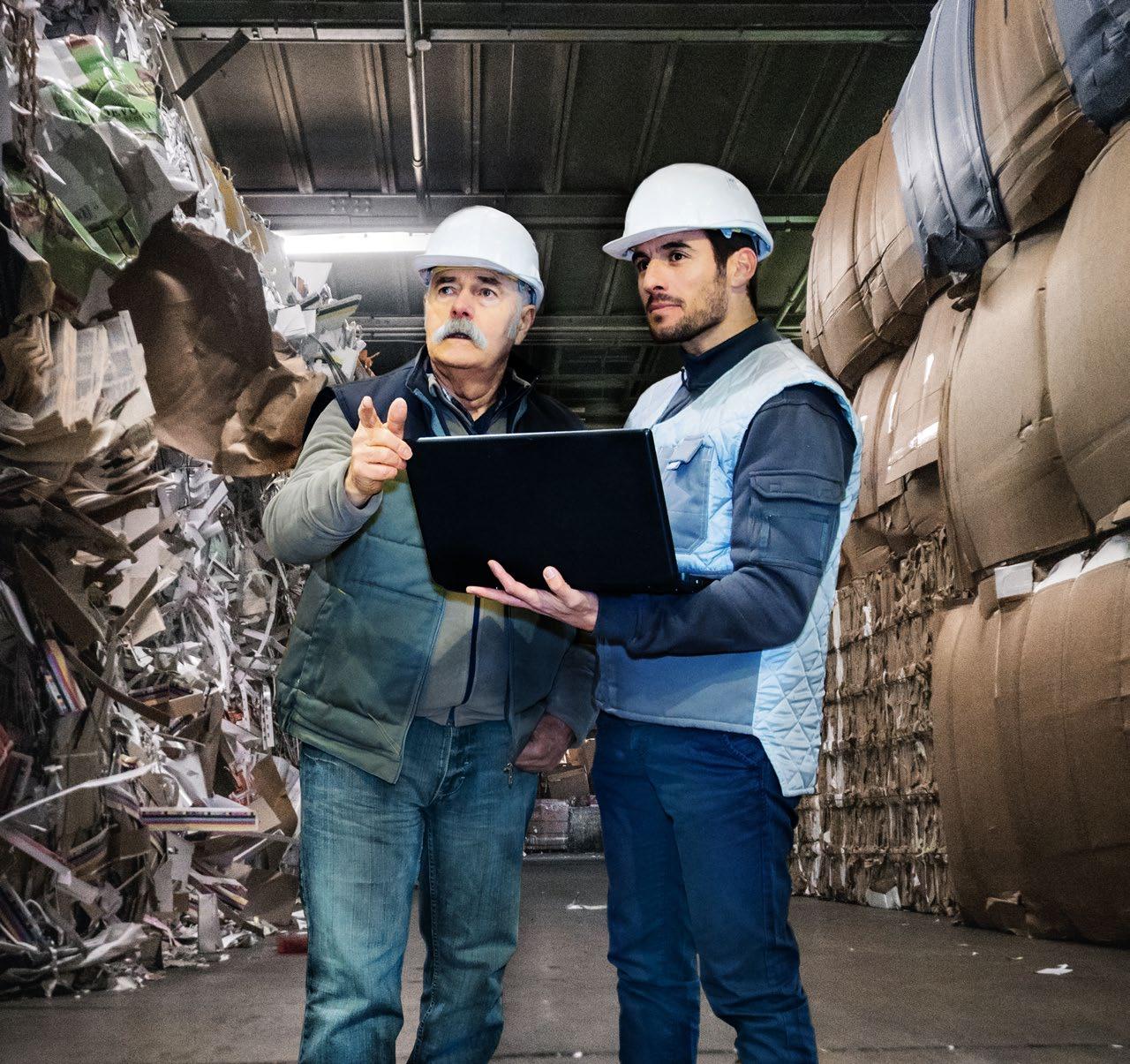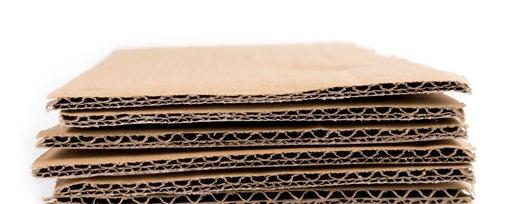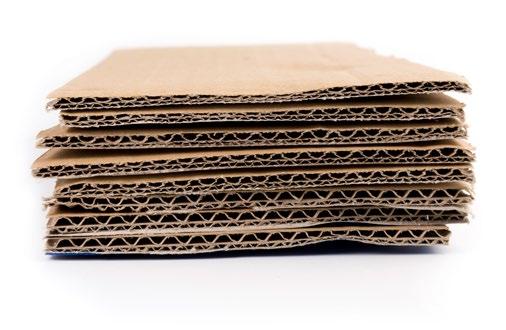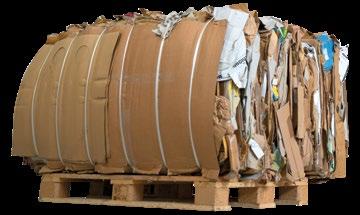State of the Commodities Market

Recessions can be defined as “high-pressure exercises in change management. To navigate one successfully, businesses must be flexible, resilient and ready to adjust.”
After two years of solid pricing of old corrugated containers (OCC), recovered secondary fiber, and other recyclable commodities, the industrial recycling market is suffering a confluence of multiple factors including an economic downturn. But what worked 20 years ago to deal with recessions won’t work today. In the last 90 days, prices of OCC declined by $90 a ton or 70 percent, according to Fastmarket’s Pulp & Paper Report in October. How did we get here, and why did it happen so quickly?
Just about every industry was impacted in some way by COVID-19, but pulp and paper really has had a pretty crazy ride. Disruptions in the supply chain caused slowdowns everywhere, but the difference for pulp and paper was consumer demand, which skyrocketed while demand for many other products dried up. This was fueled by more people ordering products online, compounded with dramatic increases in food delivery services. The paper mills seized on this opportunity and quickly built up capacity to create more of the paper liner board and medium to make all those cardboard boxes. Mills added new machines, and older machines were converted, updated or modified to make brown paper instead of white, which was declining, all with the aim of increasing capacity and inventory

dramatically.
The change in recycling industry expectations since the start of 2022 is dramatic.
The corrugated and paper waste markets are unfolding and difficult to predict due to ongoing fundamental stresses at mills and along the supply chain. There are signs of hope, however, and recycling resiliency is key to riding out the turbulence from recent market events.
When Covid eventually subsided, online sales growth didn’t just slowly return to normalcy, it dove to normalcy, dropping from a year-long average of almost 50% to single digit growth in just two quarters just as people began returning to big-box stores and other retailers, thus impacting home deliveries. Demand from pulp and paperboard mills declined rapidly and was further weakened by lower consumer demand due to inflation. The downturn affected pulp and paper mills across the country and the globe. As of Oct. 22, the average national price for OCC was $38 per ton. Mills were slow to react to the decrease in demand, resulting in a glut of recycled fiber as prices dipped to unforeseen levels. Some mills told Fastmarkets earlier this year they were turning away OCC tons.
“The industry experienced a fairly strong economy going into the pandemic,” says Mid America Paper Recycling’s CEO Don Gaines. “But now, everything is different.”


Along with the low demand for recycled paper materials, prices began rising on practically all consumer goods, including food, vehicles, general merchandise, construction, energy, utilities, transportation, and much more. As inflation and lending rates rose (the country experienced 9%
inflation in June, according to Specialty Print Communications), adding to the volatility of the recycled paper market, prices of mixed paper, another component of packaging, fell to a national average of $0 per ton.





“It’s a challenging market, to say the least,” admits Mid America Paper Recycling President Paul Pirkle. “Mills are not able to do what they did in the past. The post-COVID landscape changed everything. Amazon is making financial adjustments and the mills lack the orders allowing them to consume the materials.” Amazon pulled back on expansion plans for its fulfillment network, which affected 66 active or planned U.S. facilities, according to MWPVL International, a consulting firm that tracks the e-commerce giant’s logistics footprint. The company’s cancellations, closures, delays or pauses impact 24.6 million square feet of groundlevel space for fulfillment centers, delivery stations and other types of buildings across 28 states.
Prices paid do not cover costs across the supply chain, and processing, and shipping to end users costs much more this fall. Additionally, thirdquarter 2022, big-box sales also slumped, as did e-commerce platform giants’ cash flows, causing major employee layoffs.
70%
In 2020, supply chain disruptions and spiking demand dramatically increased prices. In 2022, the market rapidly returned to normalcy.
In the last 90 days, prices of OCC declined by 70%. As of October 22, the average national price was $38 per ton.
— Fastmarket Pulp & Paper Report October 2022
Gaines
Pirkle
Additional Market Pressures
Supply chain issues continue to impact the pulp and paper markets in several ways. Delays, congestion, low transport container availability, labor shortages, and competition for transportation capacity from other commodities have resulted in higher transportation costs for pulp producers and longer delivery times for pulp buyers. The global economy is facing substantial headwinds from inflation, rising interest rates, the war in Ukraine, and changes in consumer behavior related to the pandemic.
Inflation means less purchasing power, which has impacted the price of recycled goods. “There are also, gas, food and nonfood price hikes, higher interest rates and a changing housing market,” Pirkle notes. “Everything is happening at the same time. Housing starts are slowing down, insulation and drywall markets and any industry that uses paper, are all slowing down. We have not seen this level of rejection of recyclable materials into paper mills before. Everyone thought the recyclable paper materials were rather recession-proof,
because everyone needs paper and boxes. Right now, the market is turning on its ear.”
Flooded with OCC, the domestic market usually would go overseas, and mills and recyclers alike are deciding whether to pay increasing warehouse costs to store the material or send it to a landfill. Consequently, many mills are switching paper grades, initiating conversion investments, or taking downtime if they have substantially high inventories. Some are closing. In other cases, recycled fiber suppliers that have been dependable partners for decades are being turned away, Gaines says.
“Still, the mills are filled with intelligent, savvy people,” he counters. “If demand for one type of paper drops, and the market rises for a different grade that the mills can produce on the same machinery, they switch production. And if the mills cannot make the products in demand, they scale back production, take downtime or make products that are in demand.”

Changes
Consumer
Changes
Global Economic Headwinds: Inflation Rising Interest Rates War in Ukraine
In
Behavior
In Housing Market
Transportation
Rising prices: Food Vehicles General Merchandise Construction Energy Utilities
While the financial news is sending shockwaves through the market, Pirkle emphasizes Mid America Paper Recycling’s support of its clients and supplier-partners will never falter. “We have unwavering financial strength,” he says. “We will use it to deal with these market pressures. Although the industry hasn’t experienced these compounded market pressures before, we are sensitive to the effect the downturn is having on our partners and customers. While the markets dictate the prices we can economically pay for your materials, and the forces impacting the markets are beyond the recycling industry’s control, we want you to know we take our commitment seriously, in both strong and weak markets.”

The market is going to recover, Pirkle emphasizes. “We know it will. But at what cost in the interim? Even some new mills are coming onto the scene, but are doing so reluctantly, because they invested in fiber at a time when prices were much higher.”
Mid America Paper Recycling wants you to know it is in no way immune to any of the recent economic tribulations, Pirkle points out. “We are closely watching the situation, monitoring economic trends and are gearing up to be ready when market conditions change and demand climbs. And they will change. We are here to help you plan around such market changes and help reduce expenses and make things easier wherever and however we can.”
Gaines says in the past, paper pricing has usually fluctuated enough to withstand the market swings of a downturn. “Recycling markets often resemble elevators that move up and down and back up again in a recession, and commodity prices ordinarily have been able to withstand the swings. This time, things are a little different,” he explains. “There was just so much capacity of recyclable paper waste being built up earlier this year, that suddenly, changes were made to some orders and then to more orders. The mills began to double up on supply chain needs. Then suddenly, pricing got too low for them to bring that material into their facilities.”
How We’re
Partners Respond
Helping
“We are planning strategies to help partners and customers weather this storm”
— Don Gaines
Recycling Resilience
That’s why Mid America Paper Recycling is seriously committed to proactively informing, serving, and presenting a clear pathway for fiber recycling to help increase growth, reduce costs, and promote safety. “We are planning strategies to help our supplier-partners and customers weather this storm,” Gaines says.
“We want our network to understand what’s really happening in the market,” Pirkle adds. “Things are constantly changing. Mid America Paper Recycling is taking steps to deal with these economic changes, develop risk mitigation programs, find more ways to stay strong in a weak economy and help you keep your recycling operations moving. We’re here to educate our supplier-partners and customers about the best recycling practices, to do the right things. We are encouraging them to stay resilient, and preparing them to make more money in good times by saving and spending properly now in tough times.”
Mid America Paper Recycling is developing projects for their customers to cut indirect costs and other expenses, examine and manage recycling operation cash flow and rethink existing processes to survive in this weak economy.
“These businesses, mills and people we work with every day are intelligent and savvy,” Gaines notes. “We will all find ways to move forward. If they find a need in the Southeast, they go to the Southeast. If it’s in India, they’ll go to India. Everyone is adjusting to this new market and new realities. Providing them with the superior service and recommendations they have come to expect, we also want to help them strategically, to try different initiatives together until the market comes back, and aim to help them stay strong.”
Careful planning and remaining as nimble as possible through this period are important, Pirkle points out. “We are encouraging everyone to be as flexible as possible for the rest of 2022 and into 2023. We’ll strive to provide timely communication about market conditions. We’re all competing for a smaller slice of the pie right now, but are here to help suppliers adjust their operations and be ready for more changes that may occur. We’ll continue to find every available warehouse to help move material, reorganize and find alternatives to traditional outlets. We’ll look under every rock for opportunities for our clients,” Pirkle notes. “With large waste inventories in storage, it is especially crucial to practice the best safety initiatives and find ways to improve storage safety. We are recommending key tactics that will help buyers, sellers and producers to be ready for all these various outcomes. This is a good time to bring us in and have a direct conversation with our team.”
Our Waste Audit Survey Can Help
To improve waste collection, sorting, operating safety and more, taking Mid America Paper Recycling’s Waste Audit Survey can really help, Pirkle points out.
“Our Waste Audit Survey may uncover a need for an easier way to move stored waste material to another location, more efficiently bundling that material, or streamlining the sorting process,” he says. “Continued education about recycling best practices and ways to reduce costs is essential. Our quick, free Waste Audit Survey assesses a business’s overall recycling process and provides a baseline for action. We can then determine if recycling improvements and safety options are needed and find ways to decrease indirect costs in their waste stream. It’s great information they can use to better divert waste, avoid expensive dumpster fees, provide new in-plant training initiatives to benefit their operations and more.”
Stronger Together
Like many recyclers, Mid America Paper Recycling is in the business of change, transforming old materials into new products, Pirkle summarizes. “Recycling itself is a way to stay resilient, and remains essential for the health and well-being of our planet. Our long-lasting relationships and close contact with customers and supplier-partners are more important than ever that will make us stronger together.
Analysts say in later 2023, the markets will improve and demand will catch up. We know there is resiliency in the mills, in our suppliers and our customers. Mid America Paper Recycling is a recycling company you can trust. We are here to address your concerns, help you cope, assist the mills with their inventories, and see the market changes through together.”

Now more than ever, it is worth your while to take Mid America Paper Recycling’s Waste Audit Survey. Visit midamericapaper.com. Click here to take survey

ABOUT MID AMERICA PAPER RECYCLING
Founded in 1926, Mid America Paper Recycling is a fourthgeneration leader in the recycling industry and provides solutions for partners ranging from small businesses to large multinational corporations. Its robust program features a new benchmarking audit, consultation services, documentation, quantification and presentation of the specific and overall values that can be realized from customer waste streams. To learn more about the free waste audit and Mid America’s other environmental initiatives, call 773-890-5454 or visit www.midamericapaper.com.













